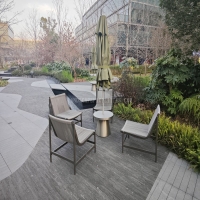Welcome to the website for landscape facilities products and knowledge.
How does the bin’s design address potential issues with waste compaction or overflow?
Modern waste bins are engineered with innovative features to address common issues like compaction and overflow, ensuring efficient waste management. Here’s how their design tackles these challenges:
1. Compaction Mechanisms: Many high-end bins incorporate built-in compactors that compress waste, maximizing space and reducing the frequency of emptying. This is especially useful for high-traffic areas where waste accumulates quickly.
2. Sensor-Based Alerts: Smart bins use sensors to detect fill levels, sending notifications when nearing capacity. This prevents overflow by prompting timely disposal, ideal for offices or public spaces.
3. Ergonomic Openings: Wider or adjustable openings accommodate bulky items without clogging, while internal flaps or partitions help distribute waste evenly, minimizing uneven buildup.
4. Ventilation Systems: Some designs include airflow channels to reduce odor and moisture, which can otherwise lead to compacted, hard-to-remove waste.
5. Modular Design: Stackable or expandable bins allow for flexible capacity adjustments during peak usage, avoiding overflow in dynamic environments.
By integrating these features, modern bins not only improve hygiene and convenience but also contribute to sustainable waste practices by optimizing disposal cycles.
Related search:

Recommendation
Metal structure rattan chair without armrests for single person, with woven seat and backrest.